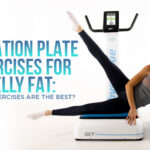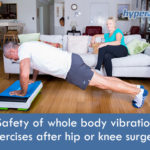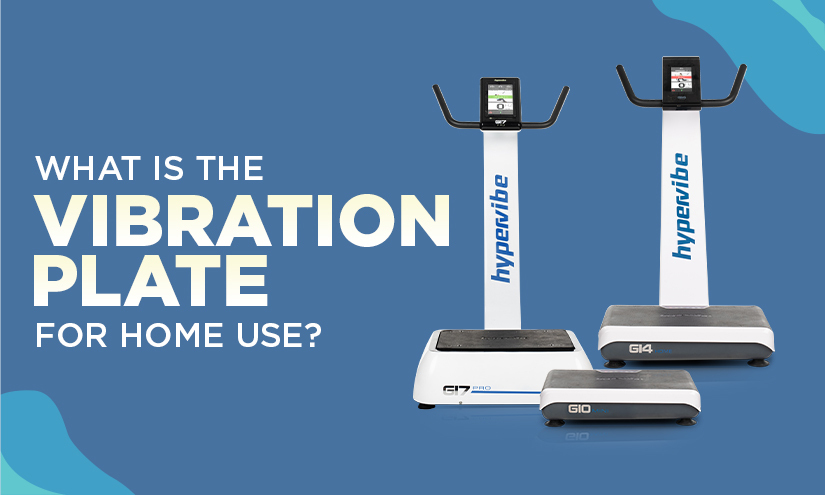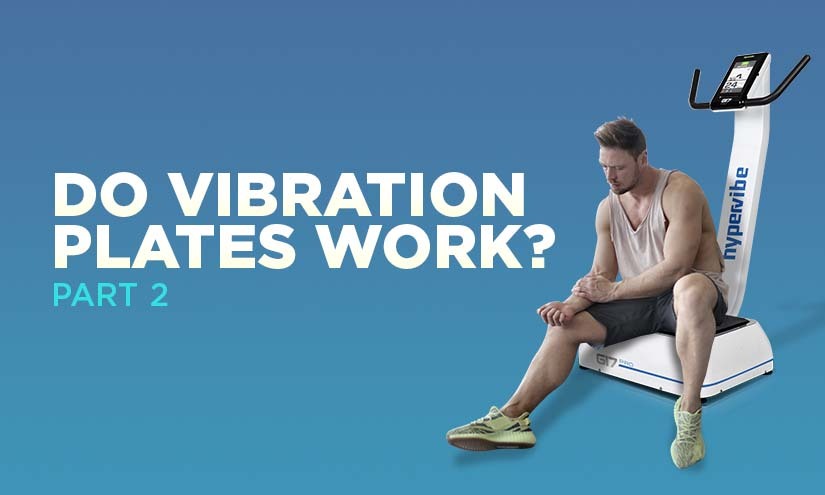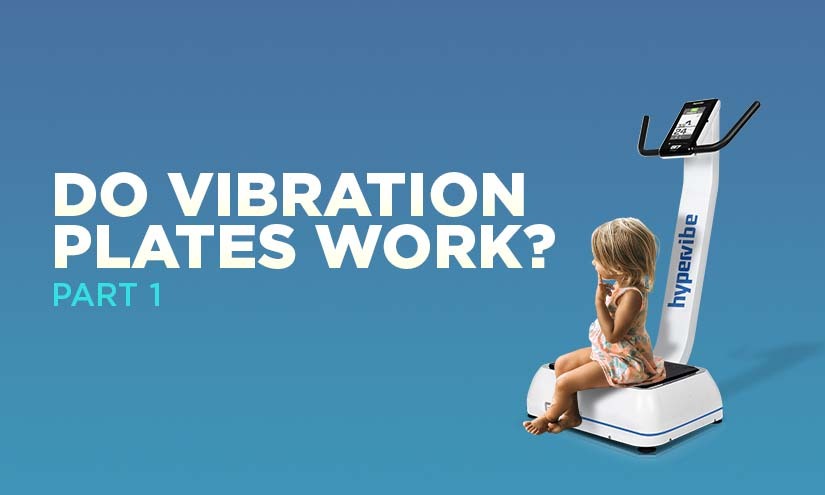Are There Any Real Vibration Plate Dangers?
Since NASA introduced them for mass use back in the 1960s, the vibration plates have been benefiting our health in more or less every possible aspect. Higher bone mineral density, stronger muscles, accelerated physical recovery, better circulation, reduced body fat percentage and healthier ageing are just a fraction of the positives, associated with the body vibration machine.
And indeed, the number of scientific studies proving the beneficial effects of the fitness equipment keep growing, as it keeps growing the popularity of the activity performed on them, namely whole-body vibration (WBV). But is it all rosy when it comes to the vibrating exercise? Are there any vibration plate dangers, and if yes, what could they be? In this article, we are going to explore the topic in greater detail.
Are there any vibration plate dangers?
Let’s be honest – every piece of fitness equipment carries a certain amount of risks, related to its use, design, or form of exercise it offers. Some machines are easier to use by most of us and some require proper health and safety training before you jump on them. Some fitness machines are so dangerous to train on that they simply counteract the beneficial effect that could be achieved by them.
But how about the body vibrating machine? Are there any possible vibration plate dangers, and if yes, what exactly? Can the equipment be used by anyone and what is its safety level? Well, to start with, the vibration plates have been categorised as a type of fitness equipment that is safe to use, including within rehabilitation settings as indicated by this study.
Having said that, it is mandatory to mention that the different brands on the market offer different settings, designs and capabilities, meaning that some might pose a bigger risk to your health than others. This is why you should always buy from a certified and trusted manufacturer, such as Hypervibe, and adhere to the following rules of thumb.
- Keep the vibration frequency range between 5 – 40 Hz
- Do not go over an amplitude of 8 mm
- Have the acceleration power (G-force) within the 10 – 27 Gs range
- Choose a platform that offers the pivotal type of movement as opposed to lineal
- Don’t overuse the equipment and allow sufficient time for rest and recovery
- Adhere to the manufacturer’s safety manual during exploitation
- Seek advice from your doctor if you suffer from certain medical conditions
Can vibration plates damage the brain?
It is no secret that vibration could be harmful to the brain. Before we continue though we should clarify that not all vibrations are the same. In fact, for this article, the vibrations can be divided into two main categories – occupational vibrations (OVs) and recreational vibrations (RVs). The former are the ones that you must be extra cautious with, whereas the latter has been found safe for implementation by most people.
Occupational vibration has been associated with extremely high frequencies within the ranges of 100 Hertz and above, whereas the frequency levels during whole-body vibration exercise rarely surpass 40 Hertz. Not to mention that OVs typically occurs 5 days a week for up to 6-8 hours a day, while, according to scientific evidence, WBV requires only 20 – 25 minutes a day, 3 – 4 days a week for maximum results.
So, can vibration plates damage the brain? The answer here is No!, but of course, if used according to the safety manual, within the recommended time duration, and healthy frequency levels. Once again, keep in mind that there are different brands out there with different specifications. Before you opt-in for one, make sure you do your homework well.
Is whole-body vibration bad for your heart?
Regular exercise has been known as one of the best non-pharmacological ways to keep your heart in optimal condition. More recent studies, such as this one, have discovered that WBV could be as good in supporting cardiovascular health as any other form of physical activity. The exercise is particularly helpful for the elderly population, most of which experienced difficulties engaging in conventional recreational activities.
The mechanical oscillations that are produced by the body vibrating platform cause a change in the muscle-tendon complex, leading, in its turn, to faster muscle tissue contractions. That means that you get the same results as in regular exercise while on the plate, but in a much shorter period of time. The ultimate result is stronger muscles, better muscle tone, and bigger muscle mass.
Adding the fact that heart health and positive vascular ageing are associated with increased muscle strength and bigger muscle mass, you can easily answer the question for yourself – whole-body vibration is actually good for your heart. Once again, individuals with certain cardiovascular diseases should speak to their health provider prior to engaging in WBV.
Is it safe to use a vibration plate every day?
As already mentioned, vibration plates are a type of fitness equipment and just as any other sports machinery, they need to be used adequately. That means spending optimal time on the plate and allowing enough time for rest between training sessions. After all, your aim should be to scoop out all the benefits, while leaving no space for drawbacks.
In order to do that, you must leave sufficient time for your body to recover and have a rest. For best results, specialists recommend using the equipment every other day, meaning 3 – 4 days a week. As to the duration of the sessions, these have been found to be most beneficial when lasting for up to 30 minutes but not more.
Unfortunately, that does not apply to everyone. Certain population demographics should steer away from the body vibrating platform altogether. That include individuals with specific heart conditions, those of you who have recently been fitted with metal pins or bolts, patients recovering from a recent operation, and women who are pregnant.
Final thoughts
Over the past couple of decades, vibration plates have been proven to benefit more or less every area of human health. Stronger muscles, denser bones, healthier heart, faster physical recovery, reduced body weight, and decreased stress levels are just some of the numerous positives, linked to the regular use of the equipment.
While the vibration machine has been rated generally safe, please keep in mind that not all brands share the same characteristics. Some are truly great, some are simply not worth it, and some are dangerous to your health. In order to avoid vibration plate dangers and to make the best out of the vibrating physical activity, adhere to the safety manual, do not overuse the plate, and allow adequate rest between activity sessions. Train wisely!
References (in order of appearance)
Alter, P., Boeselt, T., Nell, C., Spielmanns, M., Kenn, K., & Koczulla, A. R. (2017). Feasibility and safety of whole-body vibration therapy in intensive care patients. Critical care (London, England), 21(1), 91.
van Heuvelen, M., Rittweger, J., Judex, S., Sañudo, B., Seixas, A., Fuermaier, A., Tucha, O., Nyakas, C., Marín, P. J., Taiar, R., Stark, C., Schoenau, E., Sá-Caputo, D. C., Bernardo-Filho, M., & van der Zee, E. A. (2021). Reporting Guidelines for Whole-Body Vibration Studies in Humans, Animals and Cell Cultures: A Consensus Statement from an International Group of Experts. Biology, 10(10), 965.
Lai, C. L., Chen, H. Y., Tseng, S. Y., Liao, W. C., Liu, B. T., Lee, M. C., & Chen, H. S. (2014). Effect of whole-body vibration for 3 months on arterial stiffness in the middle-aged and elderly. Clinical interventions in ageing, 9, 821–828.

